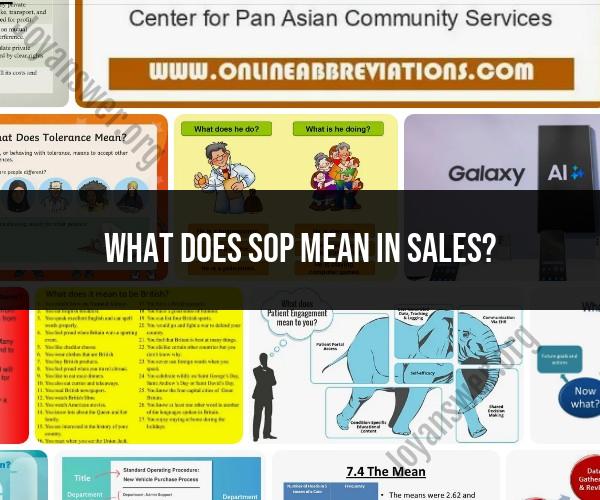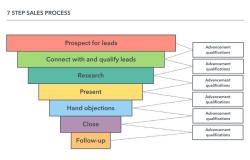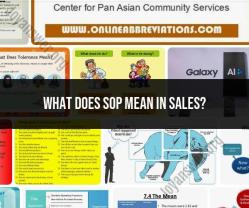What does SOP mean in sales?
In the context of sales, SOP stands for "Standard Operating Procedure." SOPs are documented guidelines or instructions that outline the step-by-step processes and best practices for various sales-related tasks, activities, or procedures within an organization. These procedures are designed to ensure consistency, efficiency, and quality in sales operations. SOPs in sales may cover a wide range of areas, including lead generation, prospecting, customer relationship management, sales presentations, order processing, and post-sales support. By following SOPs, sales teams can streamline their workflows, improve productivity, maintain compliance with company policies and regulations, and deliver a consistent experience to customers.
In sales terminology, what does SOP signify?
In sales terminology, SOP can have two different meanings, depending on the context:
1. Standard Operating Procedure (SOP): This is the more common meaning of SOP in the business world, including sales. It refers to a documented set of instructions that outlines the specific steps and best practices for a particular process. In sales, SOPs might outline steps for:
- Prospecting and lead generation
- Qualification and needs assessment
- Sales presentation and product demonstration
- Negotiation and closing
- Customer service and follow-up
Having well-defined SOPs helps ensure consistency, efficiency, and effectiveness in the sales process. They can benefit both new and experienced salespeople by providing a clear roadmap for success.
2. Sales & Operations Planning (S&OP): This refers to a collaborative process that aligns the sales and operations functions within a business. It aims to ensure that the company has the resources and production capacity to meet the projected sales demand. While not as specific to individual sales activities, S&OP also plays a crucial role in supporting sales success by guaranteeing sufficient product availability and timely fulfillment.
The appropriate meaning of SOP in a specific context can be determined by considering the surrounding information and the overall topic of discussion.







